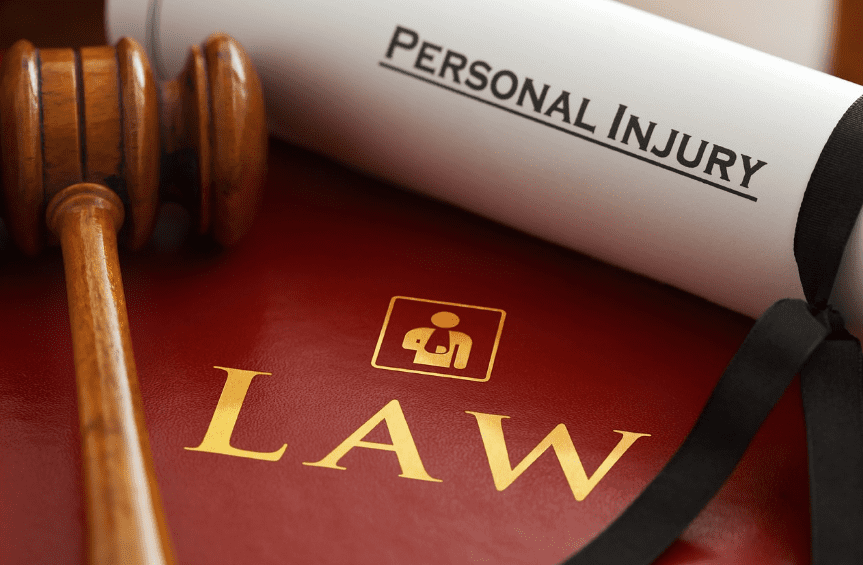
Have you been injured due to someone else’s negligence? According to a study by the American Bar Association, over 2.4 million personal injury lawsuits are filed in the United States each year. If you’re one of the many people facing this situation, understanding the process of injury settlements and lawsuits is crucial.
This blog post will equip you with the knowledge you need to navigate this complex legal landscape. We’ll break down the difference between settlements and lawsuits, explore the factors that influence settlement amounts, and guide you through the essential steps involved in a personal injury lawsuit. Whether you’re considering legal action or aiming for an out-of-court resolution, this information will empower you to make informed decisions about your case.
Types of Personal Injury Cases
Car Accidents
Car accidents are a common cause of personal injuries, ranging from minor injuries to severe consequences. Determining liability and understanding insurance coverage are pivotal aspects in these cases.
Slip and Fall Incidents
Slip and fall incidents can occur in various settings, leading to injuries that may result in legal claims. Establishing negligence and documenting the conditions of the incident play crucial roles in these cases.
Medical Malpractice
Medical malpractice cases involve negligence or misconduct by healthcare professionals, affecting patients’ well-being. These cases often require a thorough understanding of medical procedures and standards of care.
Product Liability
Product liability cases arise when individuals are harmed by defective products. These cases involve assessing liability, proving defects, and understanding how product liability laws apply.
Initial Steps After an Injury
After experiencing an injury, taking the right initial steps is crucial for preserving evidence and building a strong case.
Seeking Medical Attention
First and foremost, seeking immediate medical attention is imperative. Not only does this prioritize personal well-being, but it also establishes a crucial link between the incident and resulting injuries. Prompt medical care creates a documented record of injuries, which can be invaluable in subsequent legal proceedings.
Documenting the Incident
In addition to seeking medical help, meticulous documentation of the incident is essential. This includes taking photographs of the scene, any relevant objects or conditions contributing to the injury, and obtaining statements from witnesses. Thorough documentation aids in reconstructing the sequence of events leading up to the injury, thereby bolstering the case’s credibility and strength.
Gathering Evidence
Furthermore, gathering evidence is a critical step in building a solid legal foundation. This involves obtaining medical records detailing the extent of injuries, acquiring accident reports, and preserving any relevant communication related to the incident. The preservation of evidence serves as a cornerstone for both potential settlements and future lawsuits, ensuring that crucial information is readily available to support the case.
Understanding the Settlement Process
Navigating the settlement process involves engaging in negotiations with insurance companies, a pivotal step in seeking compensation for personal injuries.
Negotiations with Insurance Companies
Negotiating with insurance companies constitutes a pivotal stage in pursuing compensation for personal injuries. This process, however, can be intricate and requires a nuanced understanding of legal protocols. Hence, having proficient legal representation significantly impacts the outcome of settlements.
Importance of Legal Representation
Central to this process is the role of legal representation. Attorneys proficient in personal injury law possess the expertise to assess the true value of a claim, effectively negotiate with insurance companies, and safeguard the rights of their clients throughout the proceedings.
Factors Affecting Settlement Amounts
Several determinants contribute to the final settlement amount. These encompass the severity of injuries sustained, incurred medical expenses, lost wages due to incapacitation, and the enduring impact on the individual’s quality of life. Grasping the nuances of these factors is imperative for attaining a just settlement.
Filing a Lawsuit
When a fair settlement cannot be reached, filing a lawsuit may be necessary to pursue compensation for damages.
Determining Liability
Establishing liability is a fundamental step in a personal injury lawsuit. This involves proving that the responsible party’s actions or negligence directly led to the injuries sustained.
Statute of Limitations
Understanding the statute of limitations is crucial, as it dictates the timeframe within which a lawsuit must be filed. Missing this deadline can result in the loss of the right to pursue legal action.
Court Procedures and Timelines
Navigating court procedures, including filing the complaint, discovery, and trial, requires adherence to specific timelines. Legal representation is invaluable during these stages.
Discovery Phase
We will explore the exchange of information, delve into depositions and interrogatories, and highlight the crucial role of
witnesses. Understanding the intricacies of the discovery phase is essential for those navigating personal injury cases.
Exchange of Information
The discovery phase involves the exchange of information between the parties involved. This includes documents, witness statements, and other evidence that each side plans to present in court.
Depositions and Interrogatories
During the discovery phase, attorneys use depositions and interrogatories as tools to gather information. Depositions involve sworn testimony, while interrogatories are written questions that must be answered under oath.
Witnesses
Witnesses play a crucial role in personal injury cases, providing professional opinions on various aspects, such as the severity of injuries, the standard of care, and the long-term impact on the individual’s life.
Mediation and Alternative Dispute Resolution (ADR)
These approaches offer alternatives to traditional courtroom trials, providing individuals with options for resolving their personal injury claims.
Benefits of Mediation
Mediation offers a less adversarial alternative to trial. It provides an opportunity for both parties to negotiate and reach a mutually agreeable settlement with the assistance of a neutral mediator.
Arbitration as an Alternative
Arbitration is another form of ADR that involves a neutral third party making a binding decision. It offers a more streamlined process than a traditional court trial.
Settlement Conferences
Settlement conferences bring the parties together to discuss potential resolutions. These conferences can occur at various stages of the legal process, emphasizing the importance of open communication.
Going to Trial
Exploring the nuances of trial proceedings, from the meticulous preparation beforehand to the pivotal moments of jury deliberation, offers invaluable insight into the legal realm. Let’s delve deeper into the intricacies at each stage, starting with trial preparation.
Trial Preparation
Trial Preparation entails a thorough groundwork, encompassing the gathering of evidence, identification of key witnesses, and the formulation of compelling legal arguments. This meticulous preparation significantly bolsters the likelihood of securing a favorable verdict.
Courtroom Procedures
Moving into Courtroom Procedures, a comprehensive understanding of the protocols, decorum, and the respective roles of each participant is imperative for the seamless conduct of proceedings. Legal representation serves as a beacon, ensuring strict adherence to these procedures while advocating effectively within the courtroom’s confines.
Jury Deliberation and Verdict
Transitioning to the pivotal phase of Jury Deliberation and Verdict, the fate of a trial hinges on the cogency of evidence presented and the persuasiveness of arguments articulated by both parties. As jurors meticulously sift through the evidence and engage in deliberation, the culmination emerges in the form of a verdict—a definitive outcome shaped by the strength of the case presented.
Understanding these dynamics is indispensable for those navigating or contemplating a journey within the legal arena.
Factors Affecting Settlement and Lawsuit Outcomes
We’ll delve into crucial elements such as the strength of evidence, insurance coverage, and the concept of comparative negligence. Understanding these factors is key to navigating the complexities of personal injury cases.
Strength of Evidence
The strength of the evidence presented significantly influences both settlement negotiations and trial outcomes. A compelling case with solid evidence strengthens the injured party’s position.
Insurance Coverage
Insurance coverage availability and limits play a role in determining the compensation that can be pursued. Understanding the insurance landscape is crucial for assessing potential outcomes.
Comparative Negligence
In cases where the injured party shares some responsibility for the incident, comparative negligence rules may apply. This can impact the amount of compensation awarded.
Legal Costs and Contingency Fees
Delving into the realm of legal finances, we aim to demystify the intricate landscape of attorney fees, lawsuit expenses, and the concept of contingency fees. Grasping these financial nuances is paramount for individuals navigating the complexities of the legal system.
Understanding Attorney Fees
Understanding the costs associated with legal representation is crucial for injured parties. Attorney fees may be structured in various ways, and transparency about these costs is essential.
Costs Associated with Lawsuits
Lawsuits involve various costs, including court fees, witness fees, and administrative expenses. Discussing these costs with legal representation ensures clarity on financial obligations.
Contingency Fee Agreements
Many personal injury attorneys work on a contingency fee basis, meaning they only receive payment if they secure a settlement or win the case. Understanding the terms of the contingency fee agreement is vital.
Client Responsibilities and Communication
Understanding these responsibilities and fostering open communication channels are crucial components for a successful legal journey.
Open and Transparent Communication
Open communication between the injured party and their legal team is crucial for a successful case. Timely updates, information sharing, and honest discussions foster a strong attorney-client relationship.
Providing Timely Information
Timely provision of information, including updates on medical treatments, changes in circumstances, or any developments related to the case, enables the legal team to make informed decisions.
Trusting Your Legal Team
Building trust in the legal teams and guidance is integral to the client’s peace of mind. Trust fosters collaboration and ensures that the injured party feels supported throughout the legal process.
Jimenez Mazzitelli Mordes – Law Firm
Injury settlements and lawsuits are multifaceted processes that require a deep understanding of legal intricacies. From the types of personal injury cases to the various stages of a lawsuit, being informed empowers individuals seeking compensation for their injuries. An informed client is better positioned to make decisions that align with their best interests.
For personalized legal representation on personal injury settlements and lawsuits, schedule a free consultation with Jimenez Mazzitelli Mordes – Law Firm. We have Miami attorneys and lawyers in New York to assess your case and provide insights tailored to your situation.
Contact Us
Free Consultations
No Fees or Costs Unless we Win your Personal Injury Case!


